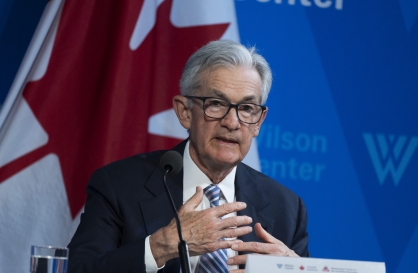South Korea pushes to treat COVID-19 like flu
Daily cases continue to surge, but severity remains low
By Shin Ji-hyePublished : Feb. 6, 2022 - 14:24

After just more than two years of the pandemic, South Korea is considering changing the current quarantine system to manage COVID-19 like a seasonal flu, as severe cases decline despite the rapid increase in the spread.
Earlier on Friday, the Central Disaster and Safety Countermeasure Headquarters said it would fully review the possibility of switching to a medical system similar to seasonal flu while evaluating the capacity of the medical system, the final severity rate and the fatality rate.
The current social distancing measures will be extended for two weeks from Monday. Considering the critical cases and medical system over the next two weeks, the government intends to slowly lift quarantine measures and switch to A “living with COVID-19” scheme.
The daily number of confirmed patients recently exceeded 30,000 after having surpassed 10,000 for the first time on Jan. 26, but the number of severely ill patients has decreased from 300s and 400s into the 200s. For the 24 hours of Saturday, the confirmed cases count increased by 38,691, but the number of critically ill patients remained 272.
The number of asymptomatic and mild patients is increasing rapidly. As of Saturday, the number of patients being treated at home was 128,716, an increase of 16,685 from the previous day, data showed.
Kim Tak, a professor of infectious disease at Soonchunhyang University Hospital, said that the size of the epidemic caused by the omicron variant has grown to the point where it is impossible to respond in the way it has been in past two years.
“In the short term, each person must share some degree of risk and try to minimize the damage,” Kim said. “Recognizing that infection can occur in everyday life or in medical institutions, individuals need to prepare in advance by knowing how to behave when they are infected.”
“In the mid to long term, COVID-19 is likely to remain permanently a disease that is more than twice the burden of a seasonal flu,” he said. “To cope with this, investment and support for hospital facilities and manpower are needed.”
President Moon Jae-in is to preside over the COVID-19 Central Disaster and Safety Countermeasure Headquarters meeting on Monday. It is the first time in more than six months that Moon will head the meeting, dating to July last year.
At the meeting, Moon is expected to check the overall quarantine situation, including medical response capacity, vaccination speed and academic management policy for the new semester, amid a two-week extension of distancing rules due to the recent explosion in confirmed patients.
The cumulative number of COVID-19 confirmed patients in Korea exceeded 1 million in two years and 18 days since the first confirmed case in Korea occurred on Jan. 20, 2020. Cases surged over the weekend as the highly transmissible omicron variant spread quickly in the preceding Lunar New Year holiday.









![[Today’s K-pop] BTS pop-up event to come to Seoul](http://res.heraldm.com/phpwas/restmb_idxmake.php?idx=644&simg=/content/image/2024/04/17/20240417050734_0.jpg&u=)
![[Graphic News] More Koreans say they plan long-distance trips this year](http://res.heraldm.com/phpwas/restmb_idxmake.php?idx=644&simg=/content/image/2024/04/17/20240417050828_0.gif&u=)







![[KH Explains] Hyundai's full hybrid edge to pay off amid slow transition to pure EVs](http://res.heraldm.com/phpwas/restmb_idxmake.php?idx=652&simg=/content/image/2024/04/18/20240418050645_0.jpg&u=20240419100350)

